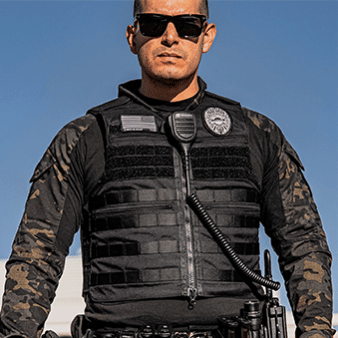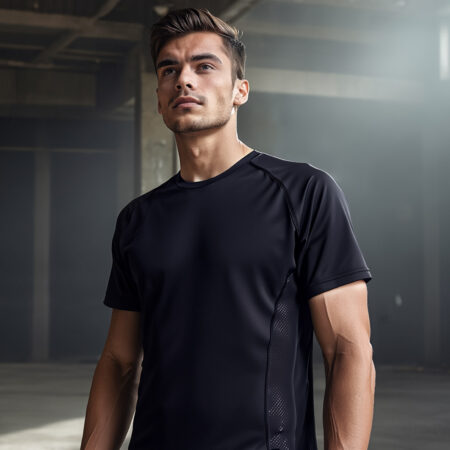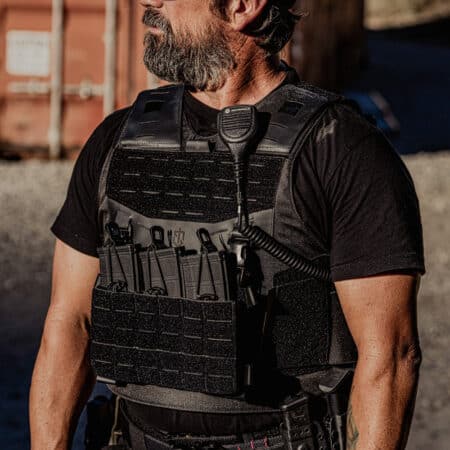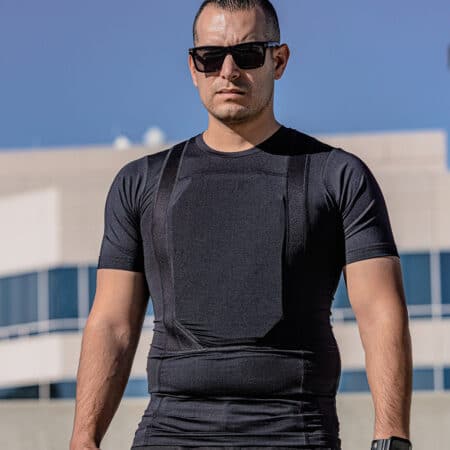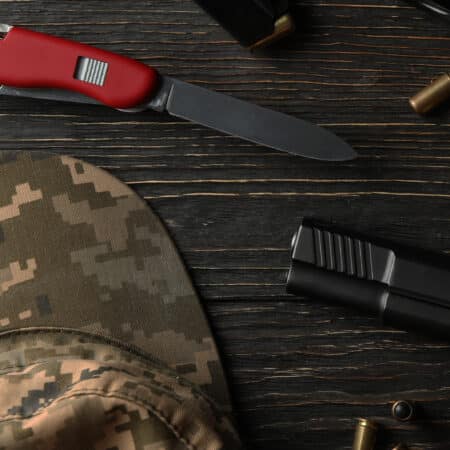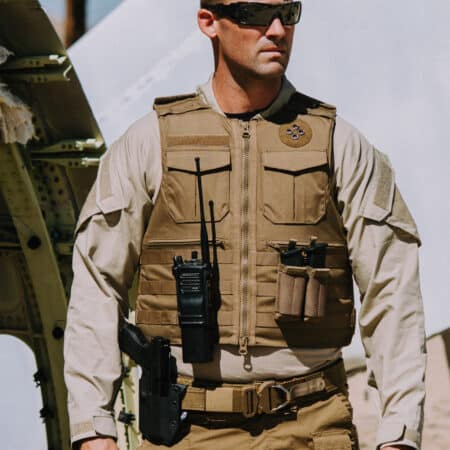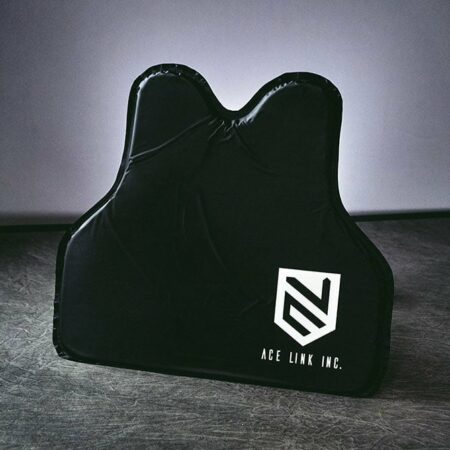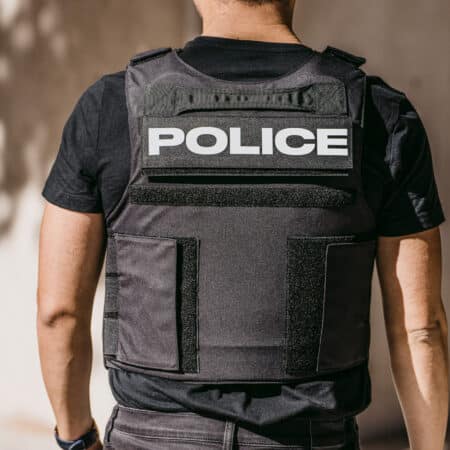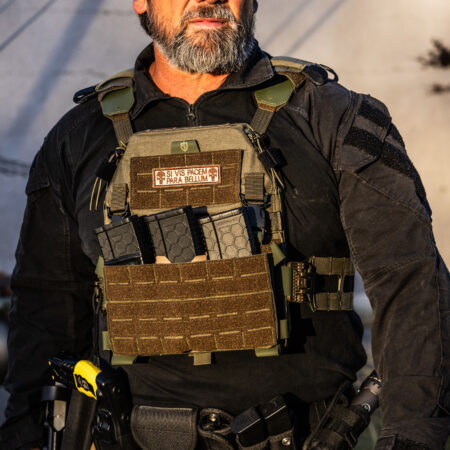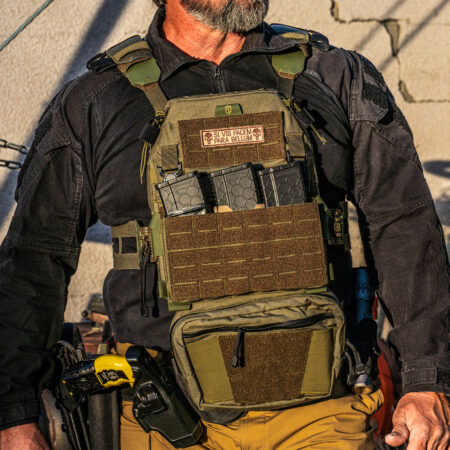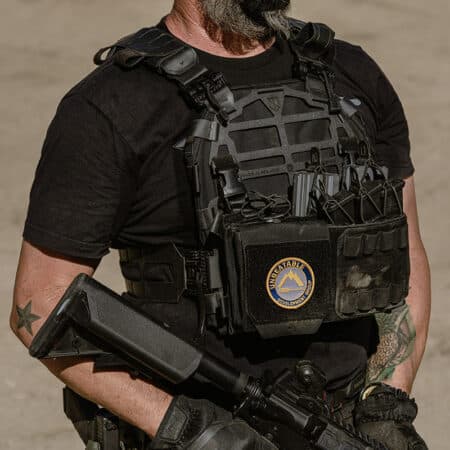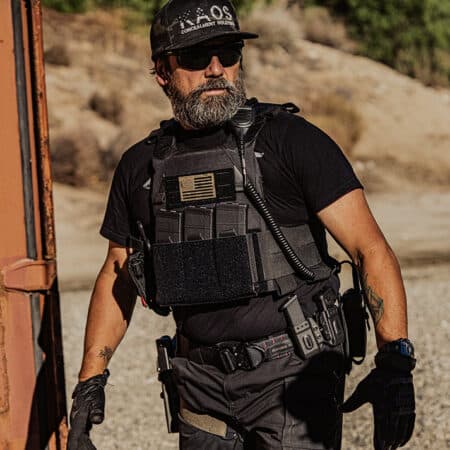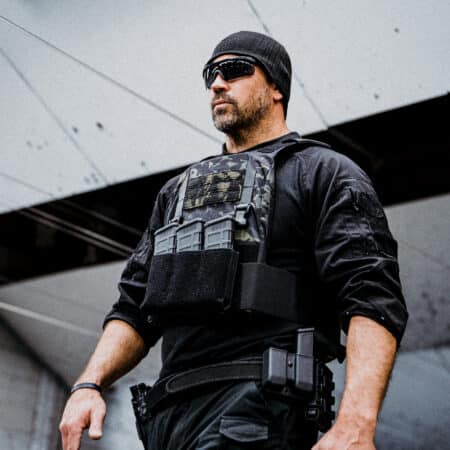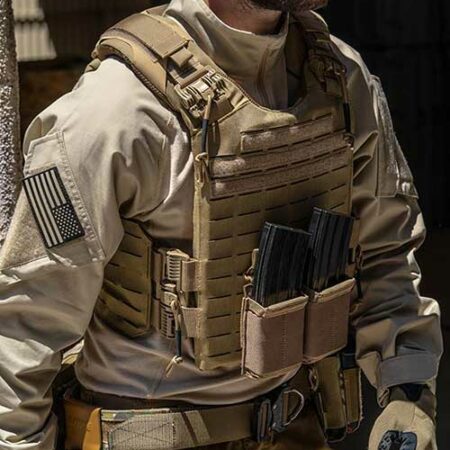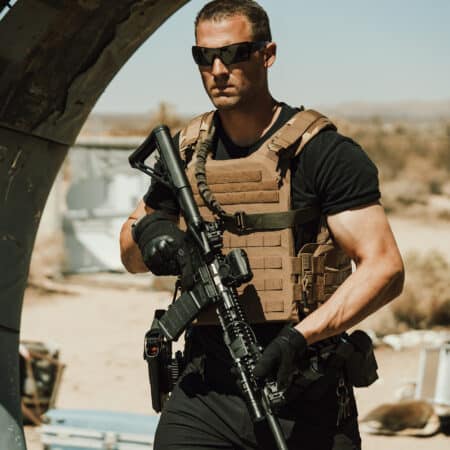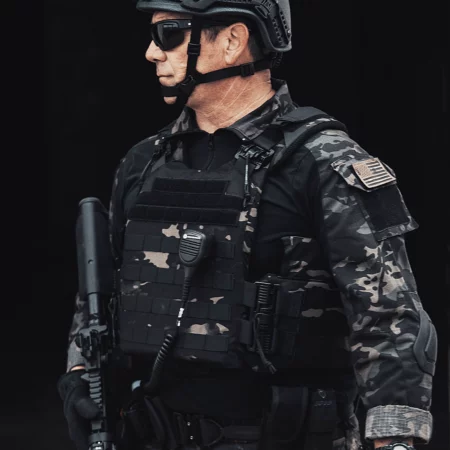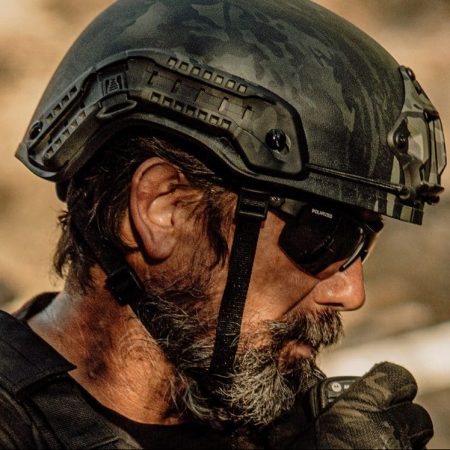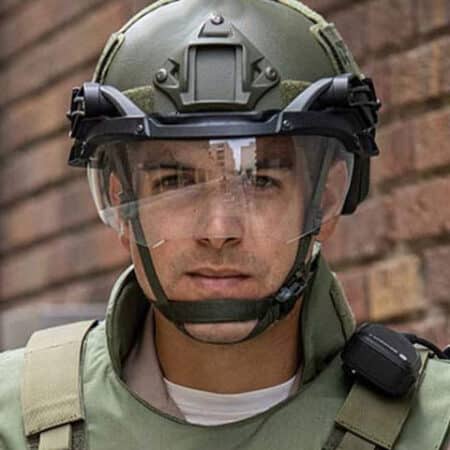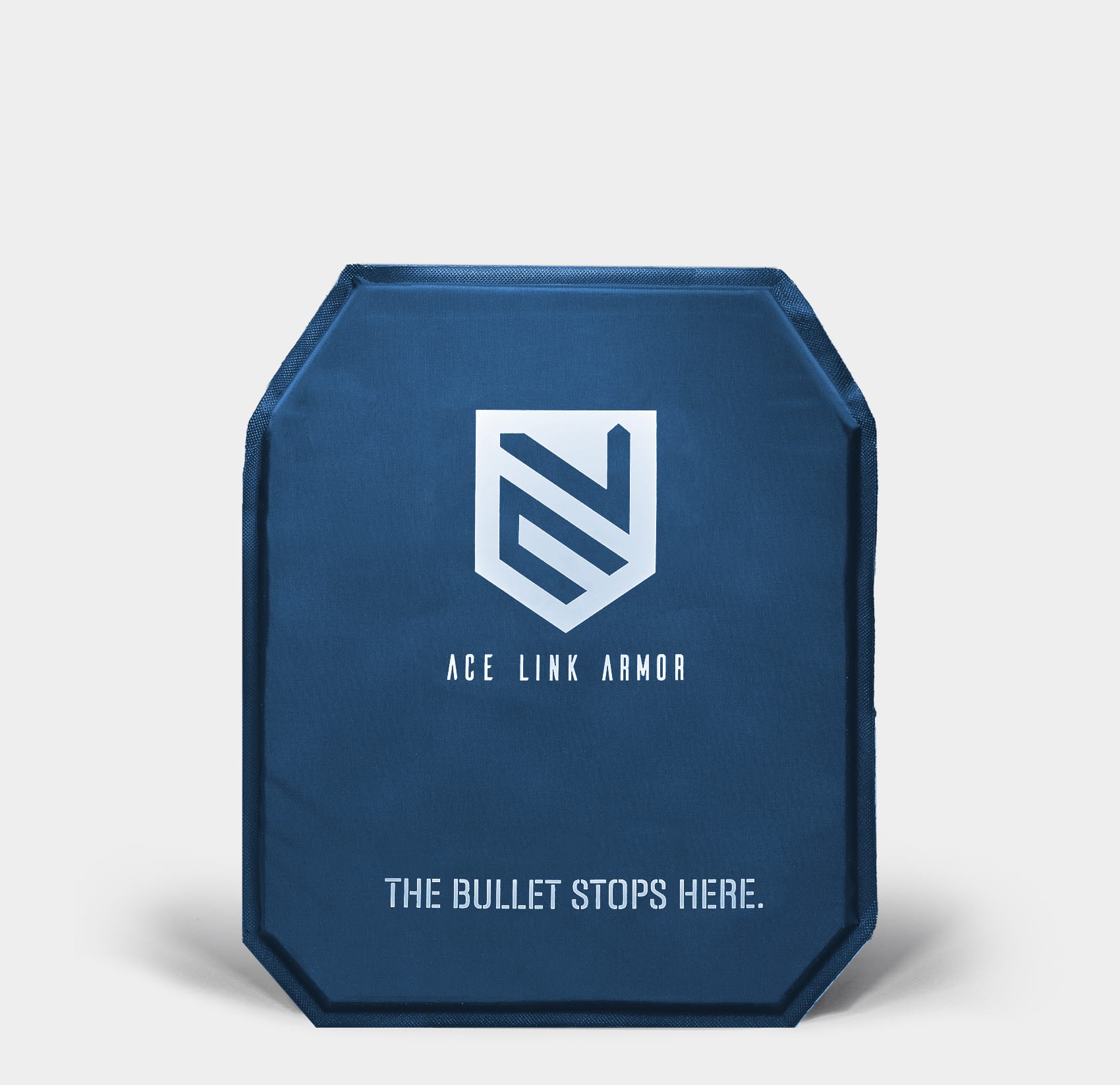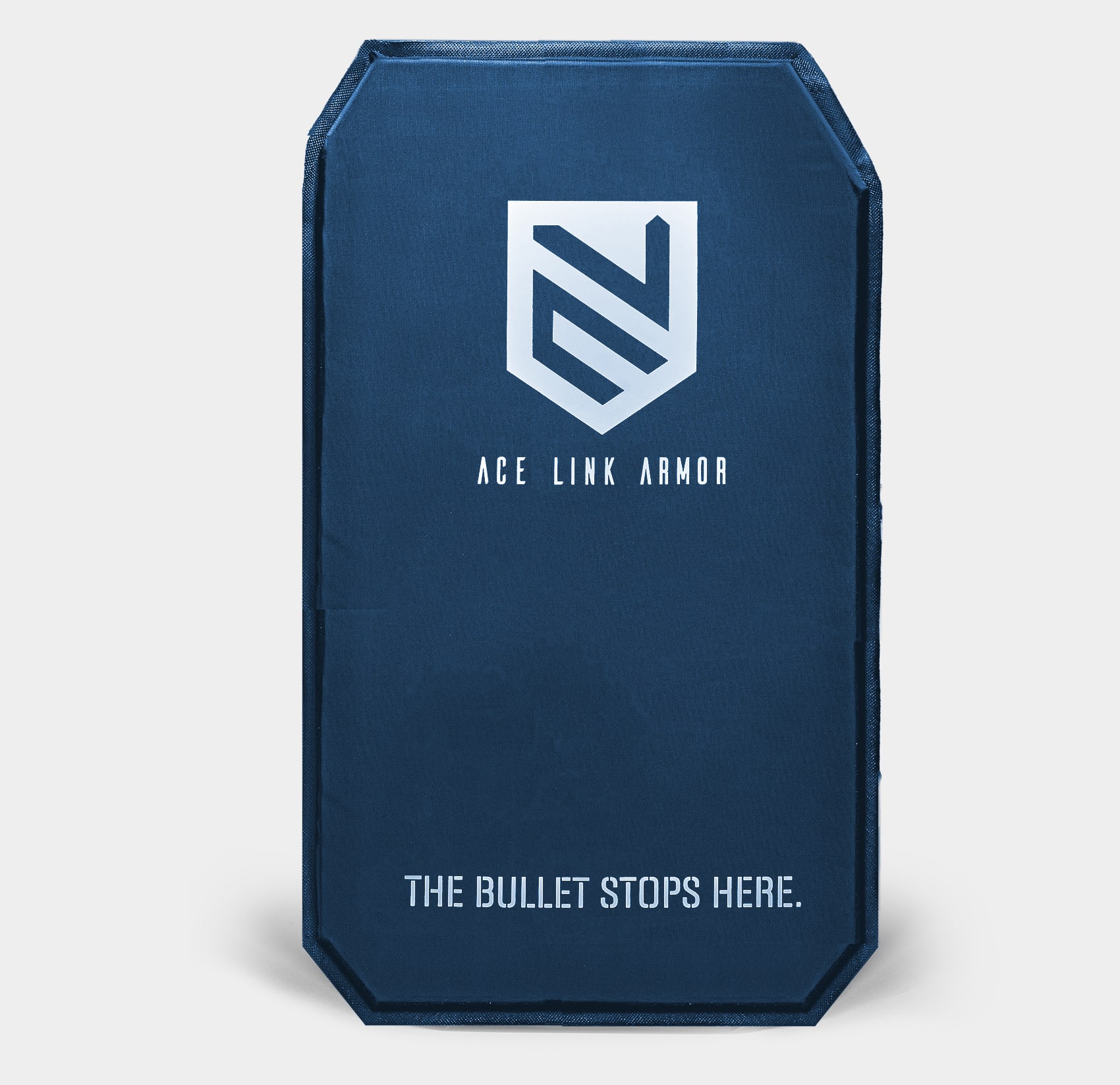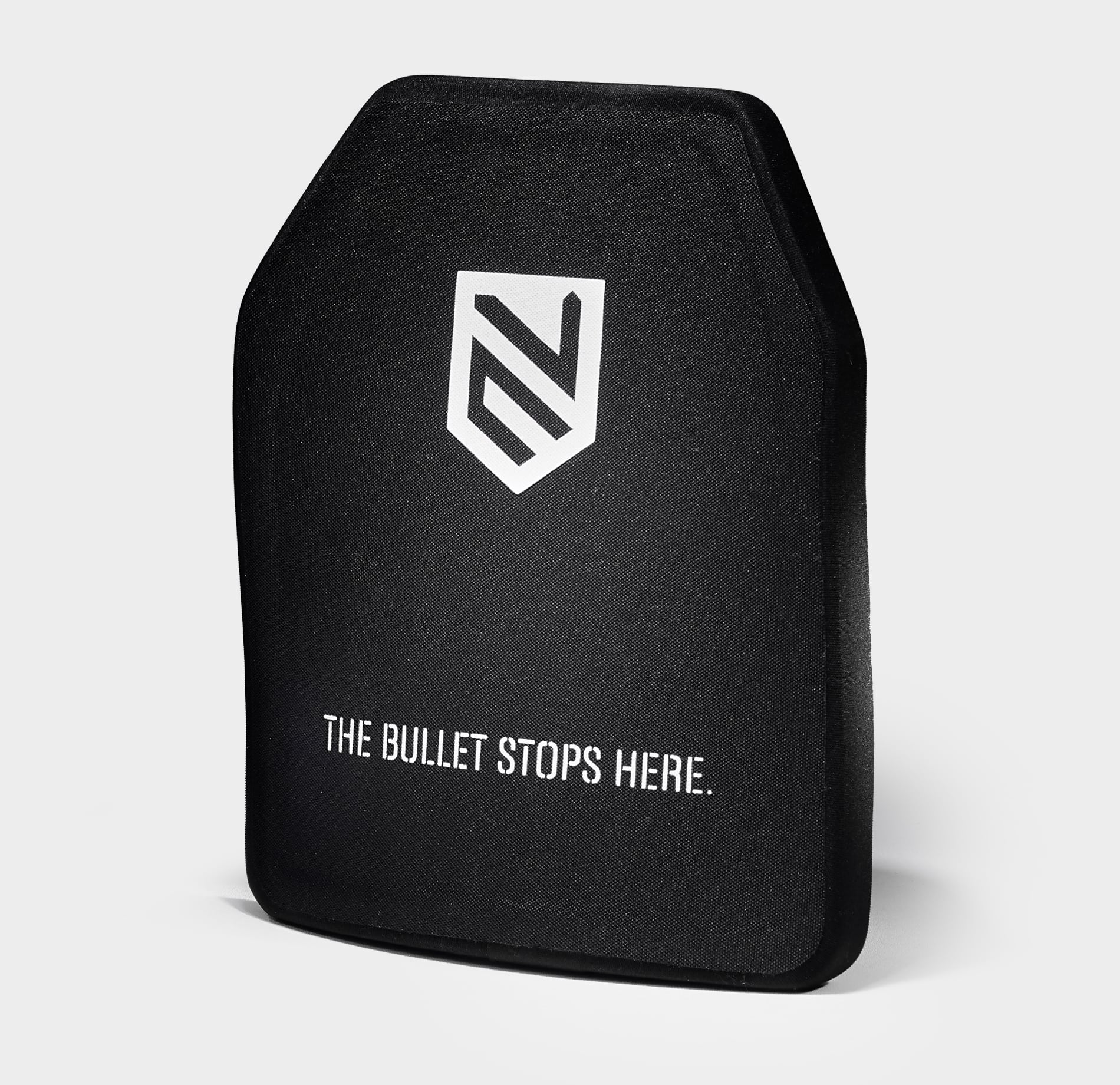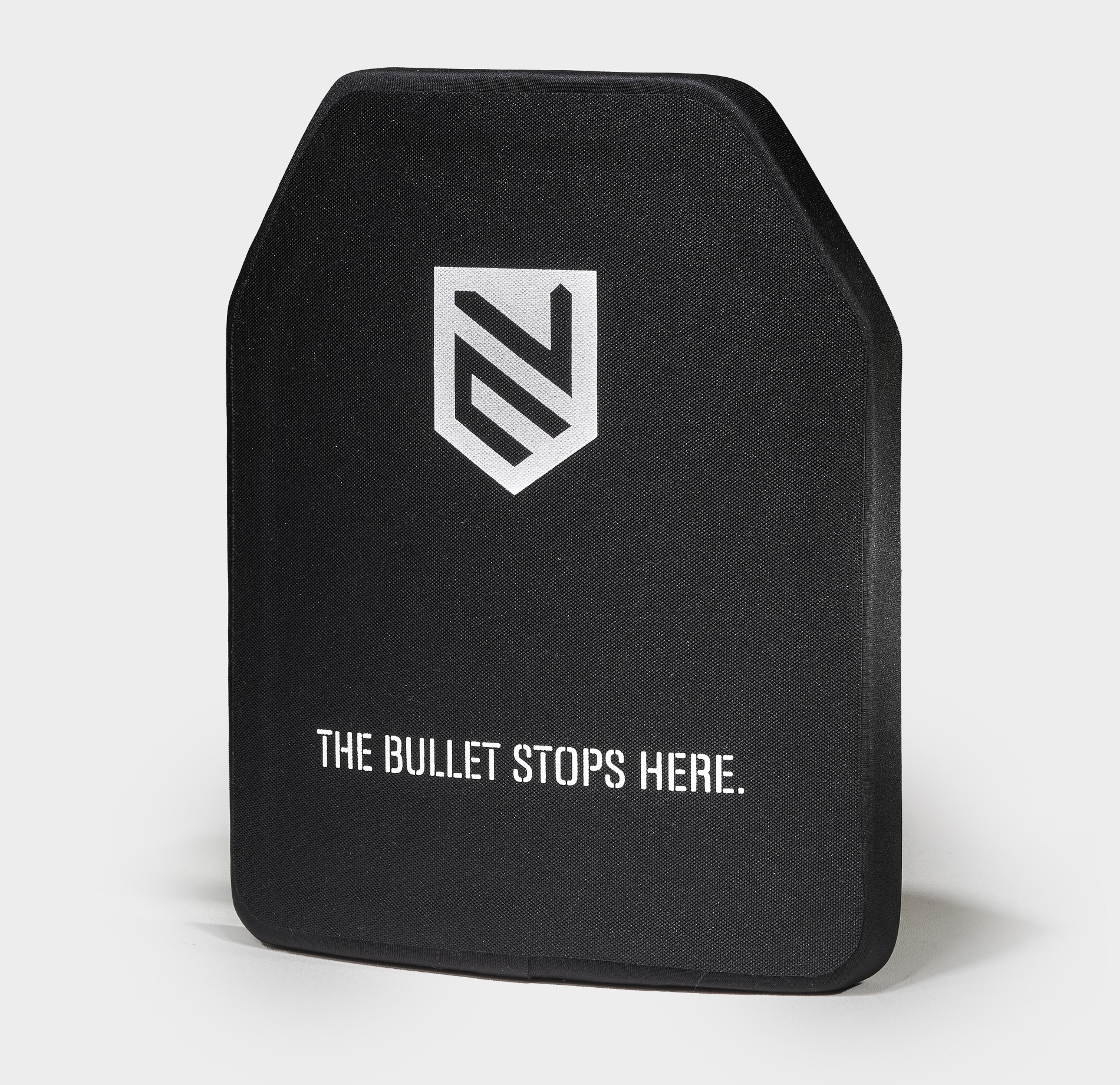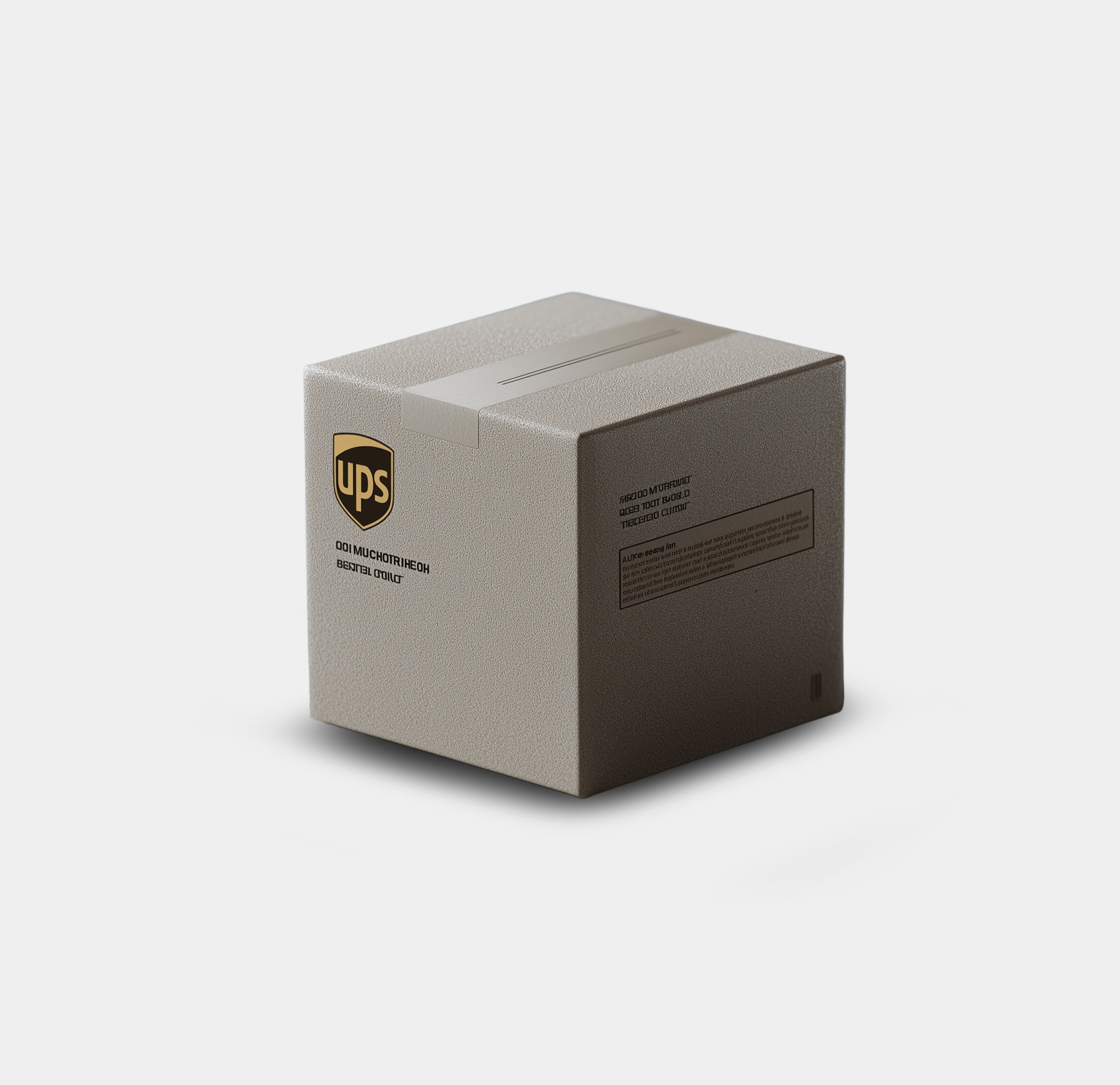NIJ Protection Levels In NIJ.07 Vs. NIJ.06 Standard – Comparison In 2022

- WHO SETS BALLISTIC STANDARDS FOR BODY ARMOR?
- WHAT IS THE NIJ?
- WHY ARE BODY ARMOR STANDARDS IMPORTANT?
- BODY ARMOR LEVELS OF PROTECTION – NIJ STANDARD 0101.06
- NIJ LEVEL II AND IIA SOFT BODY ARMOR
- NIJ LEVEL IIIA SOFT BODY ARMOR
- NIJ LEVEL III BODY ARMOR RIFLE PLATES
- LEVEL III+ SPECIAL THREAT CERAMIC ARMOR PLATES
- LEVEL IV HARD BODY ARMOR PLATES
- SIZES FOR BODY ARMOR VESTS AND PLATES IN NIJ STANDARD 0101.07
- CHANGES IN NIJ.07 STANDARD VS. NIJ.06 STANDARD
- THE NIJ STANDARD 0101.07 HANDGUN THREAT LEVEL:
- NIJ STANDARD 0101.07 RIFLE THREAT LEVEL:
- NIJ PROTOCOLS FOR FEMALE BODY ARMOR
- WHEN WILL THE NIJ STANDARD 0101.07 BE IMPLEMENTED?
- SUMMARY
When It comes to body armor, there are several personal factors that you need to take into account. These are things such as the type of environment you are preparing for, whether you want overt or covert protection, what level of protection you want, and how much weight and mobility you are comfortable with wearing.
WHO SETS BALLISTIC STANDARDS FOR BODY ARMOR?
In the US, the ballistic body armor ratings are determined by the National Institute of Justice, which offers protection levels ranging from level IIa to level IV, each level being heavier, but offering protection against bigger and rounds than the previous one. Similarly, as the protection levels go higher, the prices increase as well. While this can vary depending on the type of material that you get your vest made out of, this is going to be a fact that you and your wallet will have to work around.
NIJ.06 standards, which were set in 2008 are getting old, therefore, the NIJ has released a new set of standards, which will gradually be applied to the market. Many people don’t have a clue about the new NIJ.07 standards, therefore, today we are going to go in-depth on this topic and talk in detail about the currently applicable and old NIJ.06 standard and the changes in the new NIJ.07 standards.
Currently, we are using the NIJ0101.06 standard in the market, which categorizes ballistic armor as:
- Level IIa body armor,
- Level II body armor,
- Level IIIa body armor,
- Level III body armor, and
- Level IV body armor
In recent years, there have been developments in the body armor industries, and brands like AR500 armor have come up with new levels of protection, which aren’t standardized yet. This special type of protection level is called Special Threat and it’s also referred to as NIJ 3+ or NIJ III+. We will cover this one later on.
WHAT IS THE NIJ?

In the US, body armor ratings and standards are regulated by the National Institute of Justice (NIJ). The NIJ is a research, development, and evaluation agency focused on advancing technology for the application of criminal justice. It aims to improve the operation and working of law enforcement, corrections facilities, forensics, and judicial processes. The NIJ also does research into criminology and criminal justice.
The NIJ sets standards for many different kinds of protection and communication equipment used by law enforcement, and it is also the regulatory authority responsible for setting and maintaining standards of body armor.
Every brand that makes body armor in the US, or plans to sell it in the US, like Safe Life Defense or AR500 Armor, chooses to comply with the standards set by the NIJ. This is why many companies that make body armor, set their own rigorous quality control procedures and evaluations to show that their products meet these standards. You should always look for NIJ-certified body armor. It means that this body armor was not only tested in ambient conditions but also proved to perform after being conditioned to imitate real wear and tear that will occur while using your body armor at work or in line of service.
WHY ARE BODY ARMOR STANDARDS IMPORTANT?
This is very important because ensures that the body armor we buy will actually stop the threats that it was designed to. Moreover, it saves consumers from keeping up with every brand’s own rating system. Body armor standards are important because they ensure that the hard-earned money consumers spend on a vest will be worth it.
The National Institute of Justice (NIJ) independently tests body armor to make sure what is being sold in the market can stop bullets as advertised. This independent testing is essential to level the field among manufacturers and brands, which otherwise have their own standards. As a result of this, consumers get to compare the best sellers side-to-side, regardless of brands.
In order to ensure the body armor available on the market meets the highest standards, NIJ has established a Compliance Testing Program (NIJ CTP), operated by the U.S. Department of Justice, Office of Justice Programs, NIJ.
Independent laboratories test products that the National Institute of Justice CTP evaluates. These labs are accredited by NIST to be in compliance with standards set forth by ISO and IEC for objectivity, as well as meet specific criteria from the National Institute of Justice so they do not have any conflicts of interest relating to manufacturers or suppliers who may use their lab’s services when submitting products up for evaluation during certification testing procedures.
The NIJ CTP has never tested nor certified other types of ballistic items, such as backpacks, blankets or briefcases. Any statements made by product manufacturers that claim the products have passed testing and certification from this lab is false.
The National Institute for Justice Center to Prevent Handgun Violence (CTP) does not test any type of backpack material for ballistics purposes because they only focus on bulletproof vests and shields. This means anything claiming compliance with both standards are false advertising tactics used in an attempt to sell more merchandise than what was really needed when it comes down to safety gear.”
Over the past three decades, soft ballistic armor, which is commonly used by police has saved the lives of over 3,000 police officers. Body armor is a critical piece of safety equipment that law enforcement and corrections officers need for their personal protection.
Over the past three decades, soft ballistic armor, which is commonly used by police has saved the lives of over 3,000 police officers
BODY ARMOR LEVELS OF PROTECTION – NIJ STANDARD 0101.06
According to the currently applicable NIJ 0101.06 standards, Body armor is categorized into five levels depending upon the types of bullets it can stop. the categories are Level IIa, Level II, Level IIIa, Level III, and Level IV:
- Level IIa body armor,
- Level II body armor,
- Level IIIa body armor,
- Level III body armor, and
- Level IV body armor.
These protection levels are explained in more detail below.
NIJ LEVEL II AND IIA SOFT BODY ARMOR
The NIJ level IIA is a minimum standard for a bulletproof vest. Level IIa is usually soft armor, that is also easily concealable. Though it isn’t that popular, it does make for good covert armor for protection against some handgun rounds. NIJ level IIA provides no rifle ammunition protection.
WHAT ROUNDS WILL LEVEL IIA BODY ARMOR STOP?
According to the NIJ standards, Level IIa body armor will stop a full metal jacket .9mm round and a .40 Smith and Wesson full metal jacket as well. It will also stop smaller rounds like .380 auto and .22 LR.
WHAT ROUNDS WILL LEVEL II BODY ARMOR STOP?
NIJ Level II armor is also soft armor and it is flexible, but it is also a little heavier than level IIA. Consequently, it offers a higher level of protection. According to the NIJ standards, level II body armor inserts will stop up to a .357 magnum, along with faster 9mm rounds.
While it still has its place in the world, the price difference between Level II and IIIA is not significant enough to warrant getting level II in any situation where both are available to you.
NIJ LEVEL IIIA SOFT BODY ARMOR
When it comes to soft body armor, level IIIA is the most popular. It is affordable, lightweight, and comfortable to wear, and above that, it offers protection against almost all common handgun rounds.
WHAT CALIBERS CAN LEVEL IIIA BODY ARMOR STOP?
According to the NIJ standards, level IIIa soft body armor can stop pistol rounds up to a .44 magnum, and it can even stop 12 gauge shotgun slugs
WHY DO POLICE OFFICERS USE LEVEL IIIA BODY ARMOR?
This is the level of armor you would see a law enforcement officer wear. Most police officers wear level IIIA armor because it provides them the protection they need without being too heavy. Level IIIA is also ideal for home defense. Moreover, police officers have very draining jobs, and they have to patrol the streets for a long shift. Wearing hard armor plates on duty can be very draining, and slow officers down. Therefore Level IIIA body armor is ideal for them. However, special SWAT units do use hard armor plates since they are more likely to face rifle threats.
According to statistics, the most common crimes that a police officer may have to deal with are committed using pistols and shotguns. When rifles are involved, police offenses always call for backup. so, they don’t really need rifle armor on a regular basis, and when even they face a situation when they would be shot at with rifles, they can always call special units as a backup. Therefore, level IIIa body armor is more than enough in most cases. Please however note that body armor should be always chosen based on given circumstances and threats one expect to face when on patrol or on a mission.
NIJ LEVEL III BODY ARMOR RIFLE PLATES
When it comes to stopping rifle rounds, soft armor doesn’t work anymore, you need to upgrade to some kind of hard armor plate that can take that force. Level III is the starting standard for rifle round protection, and it also stops all pistol caliber rounds.
WHAT ROUNDS WILL LEVEL III BODY ARMOR STOP?
According to NIJ standards, Level III body armor plates can stop up to a .308 caliber. Moreover, depending on the material they are made from, they can also be quite lightweight. Level III is also probably the most popular type of body armor since it stops most intermediate rifle rounds, including AR-15 rounds (.223/5.56), AKM rounds (7.62/5.45), and bigger 308s as well.
WHAT MATERIALS ARE USED TO MAKE LEVEL III BODY ARMOR?
Level three armor plates can be made from steel, ceramics, or polyethylene. Though steel plates last for a long time, they are quite problematic because of spalling. When these plates are hit with a bullet, it can deflect its fragments towards the wearer, or the people around them. Some manufacturers cover their steel plates with rubber to prevent spalling, but that isn’t a reliable solution either.
That is why ceramic and polyethylene armor plates are preferred. Ceramic plates offer excellent protection, but they can easily get damaged and lose their integrity if they fall hard, or are hit with something. Still, they aren’t as fragile as many people believe them to be, and most ceramic armor plates these days have a PE coating, which makes them very strong and reliable
Recently, level III armor plates have been made entirely out of Ultra-High-Molecular-Weight Polyethylene, which is considerably lighter than ceramic or steel plates. Though these plates may be more expensive, they are very lightweight and comfortable.
WHY IS LEVEL III BODY ARMOR SO POPULAR?
Level III plates in general are considerably cheaper than level IV armor. Which is another reason why they are the most popular type of body armor used by special law enforcement units, and military personnel as well. Moreover, they offer a high level of protection, while still being fairly lightweight and mobile.
This is why many people consider level III body armor plates to be significantly superior to level IV and special level III+ armor.
LEVEL III+ SPECIAL THREAT CERAMIC ARMOR PLATES
Though level III+ isn’t a standard officially designated by the NIJ, recently, many bony armor manufacturers have started to make it. Level III+ is quite similar to level III, but it is a little stronger and can stop a larger variety of rounds.
WHAT ROUNDS DOES LEVEL III+ BODY ARMOR STOP?
Level III+ stops everything that level III body armor stops, however, it goes a step further, by also providing protection against armor piercing 5.56 rounds, which are notorious for being the kryptonite of body armor. These green tip AR-15 rounds are very fast and have a steel penetrator as well. These armor piercing rounds are also known as M855 rounds or green tips.
This level of body armor will also stop AKM rounds and Full metal jackets .308 rounds. However, it can not stop .308 black tip AP rounds.
HOW ARE LEVEL III+ BODY ARMOR PLATES MADE?
These plates are made using high-strength ceramics and Ultra-High-Molecular-Weight Polyethylene in conjunction with each other. Together, the ceramics can break down the incoming round, and the polyethylene catches the fragments.
ARE LEVEL III+ BODY ARMOR PLATES POPULAR?
Though these hard armor plates are stronger than level III, they aren’t used as often, because AP rounds can be expensive, and they are rare. It is quite unlikely the Law enforcement officers or civilians will be shot at with green tip 5.56 rounds.
LEVEL IV HARD BODY ARMOR PLATES
Lastly, on the top of the pyramid, we have level IV body armor, which offers the highest level of protection and is also the heaviest and the most expensive kind of body armor. It is used for special purposes in the military, however, for the most part, soldiers do rely on level III body armor plates, which are much lighter. Moreover, in most engagements, soldiers are likely to face common rounds like 5.56x45mm, 7.62x39mm, and 7.62x51mm, all of which a Level III plate can stop.
WHAT CALIBERS WILL A LEVEL IV BODY ARMOR PLATE STOP?
A level IV hard armor plate will stop every intermediate pistol round, intermediate rifle round, and many popular sniper rounds as well. According to the NIJ standards, a level IV body armor plate can stop up to a 30.06 armor penetrating round.
30.06 is a massive caliber, which is significantly bigger than a .308 Winchester. It is the round used in the old M1 Garand rifles. Level IV armor will also stop .30 caliber M2 machine gun rounds.
WHAT ARE LEVEL IV ARMOR PLATES MADE OF?
Level IV bulletproof armor plates are commonly made from composite materials or steel, which is why they are quite heavy. It is stated that Level IV armor plates can withstand up to a .30-06 caliber rifle round, but this varies depending on the manufacturer and model.
Level IV body armor is sometimes called “Composite”. These terms refer to the fact that strike face ceramic is usually combined with PE backing that is a material responsible for absorbing the impact energy in this case.
While Polyethylene backing is capable of dispersing the energy of a hit, ceramic tiles located at front first layer will mushroom-shape the bullet and absorb the initial impact energy. There are several types of ceramic that can be used as a strike face layer of material:
- Aluminum Oxide
- Silicon Carbide
- Boron Carbide
Ace Link armor does make Ceramic armor plates that are considerably lightweight. The Ace Link level IV armor weighs only 6 pounds, which is manageable for the level of protection it provides and is significantly lighter than an equivalent steel plate.
SIZES FOR BODY ARMOR VESTS AND PLATES IN NIJ STANDARD 0101.07
No, The sizes of bulletproof vests and heavy armor plates in the new NIJ Standard 0101.07 are going to be the same as NIJ Standard 0101.06. However, the sizes can be a little tricky to understand as they are, because bulletproof vests are sized somewhat like normal clothing, however, plate carriers for hard armor plates are sized according to the plates they fit.
CHANGES IN NIJ.07 STANDARD VS. NIJ.06 STANDARD
Since 2008, the industry is following the NIJ Standard-0101.06 for Ballistic Resistance of Body Armor, however, the upcoming NIJ Standard 0101.07 brings a lot of new changes and improvements in the way we manufacture and rate body armor.
It brings new testing methods and performance requirements for different levels of ballistic resistance that body armor will have to meet. You can say that the new NIJ Standard 0101.07 is more strict and detail-oriented as compared to the previous NIJ.06 standard. For instance, Conditioned armor panels will have to be shot at the very same bullet velocity that is required of non-conditioned armor.
Moreover, the notations used to explain different levels of body armor have also been changed in the new standards. They have been rewritten to be more intuitive to avoid confusion among law enforcement personnel and civilians who use body armor.
According to the old standards, ballistic protection armor was rated as level IIa, level II, level IIIa, level III, and Level IV. level II and IIIa standards were for soft body armor rated to stop handgun rounds, whereas level III and IV hard armor plates were rated to stop rifle rounds. However, the problem with this notation is that it doesn’t tell us anything specific about the armor, and it can get quite confusing for someone new to choose the right kind of armor.
In the new 0101.07 Standard, body armor is categorized into five separate levels of protection.
For armor that stops handgun rounds, the HG notation has been used, along with the level of protection. For example, HG1 and HG2 body armor standards will replace level II and level III standards. The level IIa designation has been removed with the new NIJ standards.
Similarly, for rifle protection ballistic body armor the new notation of RF is used, along with the level of protection. For example. The RF1 and RF3 standards are going to replace the previous level III and level IV NIJ standards. The RF2 level of protection is a new intermediate standard created by the national institute of justice, because of the increasing popularity of intermediate rifle rounds.
THE NIJ STANDARD 0101.07 HANDGUN THREAT LEVEL:
In the new set of standards, the Level IIA armor which was rated against low-velocity handgun rounds, such as the 9mm FMJ RN and the .40 S&W FMJ does not exist anymore.
NIJ HG1 SOFT ARMOR:
Level II armor, which is now renamed as NIJ HG1 is tested with the same rounds that the previous level II was tested with. These are the 9mm FMJ RN and .357 Mag. JSP rounds. Like the currently used level II body armor, the HG1 soft armor inserts will be able to stop up to a .356 magnum round.
NIJ HG2 SOFT ARMOR
The NIJ HG2 is the new designation for level IIIa soft body armor. Bulletproof panels rated for level IIIa were previously tested with .357 SIG FMJ Flat Nose rounds, however, for the new HG2 level, armor panels will be tested with faster 9mm FMJ Round Nose rounds.
The new NIJ HG2 level soft armor will be able to stop most pistol rounds up to a .44 magnum, which is a very big pistol round. The only pistol rounds that it won’t stop are .50 AE (desert eagle round), and .500 magnum, both of which arent common and are massive rounds.
The National Institute of Justice now also requires conditioned and nonconditioned body armor to be tested with the same velocity bullets. This initiative will pressure body armor manufacturers to deliver products that perform better even in unfavorable environments.
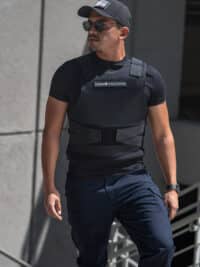
SPECTERE BULLETPROOF VEST
Ace Link Armor Spectre Body Armor provides comprehensive ballistic protection to ensure the wearer is safe when he needs it the most. NIJ.06 IIIA structure will stop multiple rounds of various handgun threats (up to .44 magnum).
A cooling mesh which resists the growth of bacteria, mold, and mildew while keeps the wearer cool and comfortable by effective heat dissipation.
Spectre bulletproof vest has been designed to provide perfect and unnoticeable protection whether worn under clothing or over top.
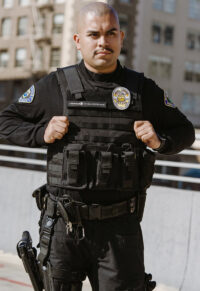
COMP-28 BULLETPROOF VEST
Ace Link Armor COMP-21 Bulletproof Vest provides comprehensive ballistic protection to ensure the wearer is safe when he needs it the most. NIJ.06 IIIA structure will stop multiple rounds of various handgun threats (up to .44 magnum).
The body armor is simple to wear, yet highly effective and functional – it features a lightweight material to keep the wearer comfortable and agile. At only 5.5 lbs average per vest, you will be able to do what you need without any encumbrance.
A cooling mesh that resists the growth of bacteria, mold, and mildew while keeps the wearer cool and comfortable by effective heat dissipation. Spectre bulletproof vest has been designed to provide perfect and unnoticeable protection whether worn under clothing or over top. Armor is fabricated from our proprietary bullet-resistant material – Aramid fabric renowned for its strength, lightweight, durability, and high performance.
NIJ STANDARD 0101.07 RIFLE THREAT LEVEL:
Though not many changes were made for the handgun threat level armor in the new NIJ Standard 0101.07, as far are rifle caliber hard armor is concerned, there has been quite a bit of innovation. The testing rounds for rifle caliber body armor have been changed, and an entirely new threat level has been introduced.
In the previous, NIJ Standard 0101.06, rifle threat levels were named level III and level IV, level II being able to stop up to 7.62×51 full metal jackets, and level IV being able to stop 30.06 AP (Armor-piercing) rounds.
Now, these levels have been renamed to RF1 and RF3, according to the new NIJ Standard 0101.07.
NIJ RF1 LEVEL BODY ARMOR PLATES:
RF1 level armor will be tested by a variety of rounds, which are 7.62x51mm M80 Ball NATO FMJ steel jacketed spire point boat tail rounds, 7.62x39mm surrogate test 120.5 grain rounds, and variations of 5.56mm BT 56 grain rounds.
NIJ RF3 LEVEL BODY ARMOR PLATES:
On the other hand, RF3 level armor will be tested using 30.06 M2 Armor Piercing (AP) FMJ spire point AP 165.7 grain rounds. It will have the same bullet-stopping capabilities as Level IV body armor.
NIJ RF2 LEVEL BODY ARMOR PLATES:
To fill the gap between these two standards, the RF2 level armor will also be introduced. The key to beating armor is speed, and a fast traveling, steel core, 556 round can defeat some level III body armor. Therefore, the level RF2 is designed to stop these rounds as well and is tested using 5.56mm M855 rounds, along with AK rounds (7.62×39) and FMJ 308s
For the last few years, some body armor manufacturers like ar500 armor have been calling this level III+ or level III++ armor.

RECOIL PLATE CARRIER
Our Recoil Minimalist Plate Carrier is now available with features added from the very people who asked for them – you.Meet the most concealable plate carrier on the market!
With its slim profile design and adjustable fit options, this is a great choice for anyone looking for a high quality plate carrier they can use daily whether they work in law enforcement or military service or simply enjoy outdoor activities such as hunting or hiking through rugged terrain where additional protection might be required.
It’s a modern world minimalist plate carrier.The carrier is made from high-quality materials and it offers durability, comfort, and functionality that will allow you to take full advantage of it. The design makes the plate carrier lightweight but very sturdy at the same time so when in use, all weight will be properly distributed across your shoulders and the entire system won’t feel cumbersome or hard to wear.
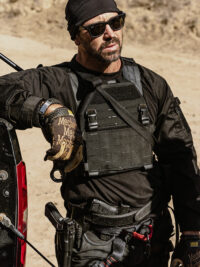
FORMOZA PLATE CARRIER
The Formoza plate carrier is one of the most guarded, researched, and developed plate carrier on our catalog. It is made out of durable 500D Nylon Cordura fabric, and can carry both front and back armor plates of all thickness. It also features a Laser cut MOLLE compatible load bearing system front and a Detachable laser-cut front flap for easy attachment of pouches and accessories.
This minimalistic plate carrier uses a Galvanized Rubber-Like composite material to repel moisture and salt-water corrosion. It offers Overlap-Coverage of Shoulder and Waist closures using hook-and-loop panels for strong bond even in maritime operations.
NIJ PROTOCOLS FOR FEMALE BODY ARMOR
These days, women are also an integral part of our armed forces and law enforcement agencies, and over the past decade, the popularity of female gun owners has also increased. Therefore, there is a significant increase in female body armor in the market, and there is no current specific standard for it. Therefore, there is an urgent need to establish standards and research protocols for female body armor.
The protection level offered by women’s vests would be at the same level as men’s vests. Female officers can continue using their existing vests until they are done so regardless of which agency they work for (state, federal or city).
There are two aspects that make it difficult to design and develop female body armor:
The difference in the physique of males and females (shape of the breast),
The pliability/stretchability of material used for the vest.
Based on past research NIJ has conducted, there are several standard tests that need to be applied to ensure safety and effectiveness at protecting an officer from ballistic threat while still allowing mobility for routine activities like sitting, bending, or lying down. These include waist size tests (which is not something eligible candidates can easily verify), weight range tests (as most manufacturers test their vests with lightweight male models), and durability tests. Female body armor is not only different in terms of size, but also in the way they fit. Therefore, a female officer shouldn’t be compared to a male officer in regard to which vest gives more protection.
Addressing these issues will allow female officers to continue using their existing vests or purchase new ones without having to make alterations such as taking out ballistic panels or replacing them.
With the new NIJ Standard 0101.07, special test protocols for female body armor have been introduced. Manufacturers will have to test with additional shots around the bust cups to ensure that body armor designed for female users offers the same level of ballistic protection in that area as armor designed for men.
WHEN WILL THE NIJ STANDARD 0101.07 BE IMPLEMENTED?
Efforts to bring a new standard for body armor started back in 2012 after the National Institute of Justice FIT (Follow-up Inspection and Testing ) program was initiated. A special technical committee was formed of body armor experts, test laboratory staff, and practitioners from NIJ, their CTP, and other relevant agencies. At that time it was expected that the NIJ Standard-0101.07 will be announced in 2017 and implemented over a short period of time.
However, that didn’t work out, but now that the new standards have been made, you can expect them to replace newly manufactured body armor by the first quarter of 2022.
SUMMARY
Body armor is an essential tool for law enforcement agencies, the military, and first responders. moreover, civilians can also own body armor to protect themselves in the case of home invasions and other unfortunate scenarios.
Therefore, it is essential that we know about body armor, and its different levels and types. Moreover, if it wasn’t difficult enough to understand bulletproof armor ratings already, the new NIJ standards have caused more confusion, especially for people who are new to using body armor.
So, we explained all there is to know about body armor in this detailed post, and what changes the new NIJ Standard-0101.07 will bring. we hope that you found the post entertaining to read and informative as well.


